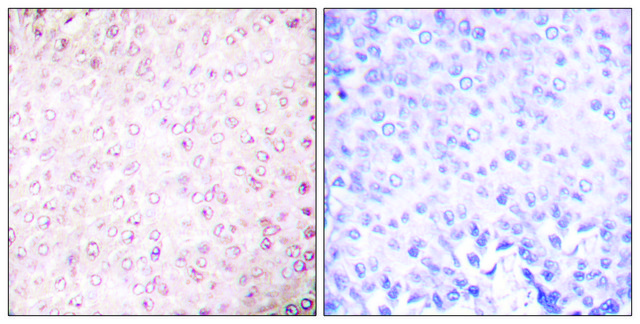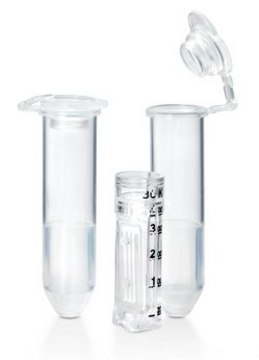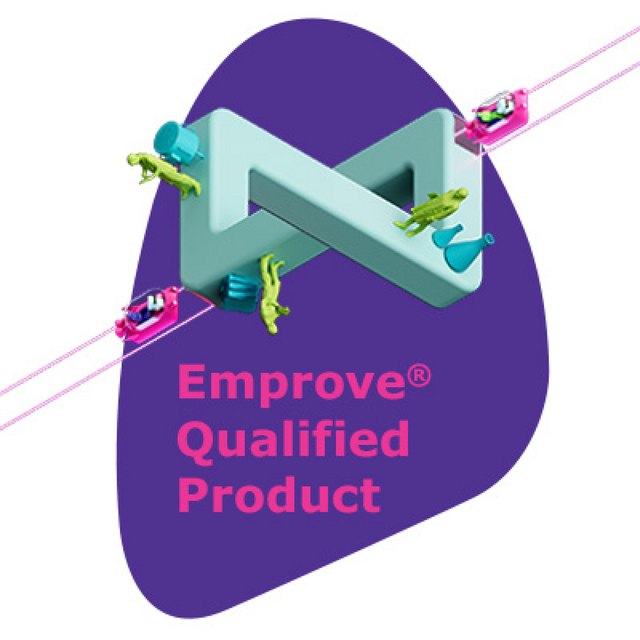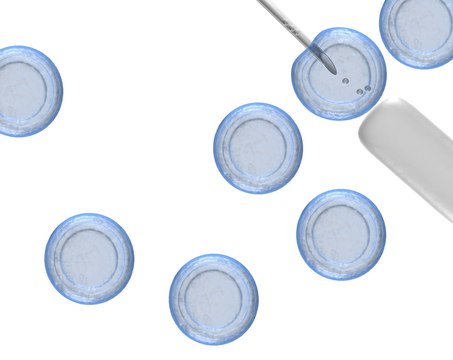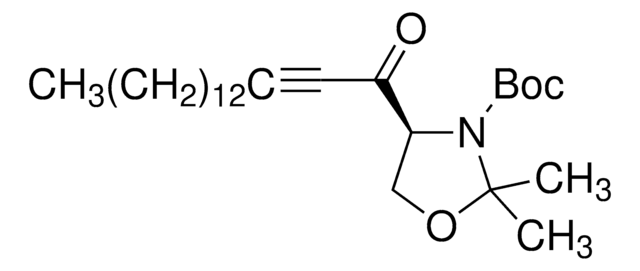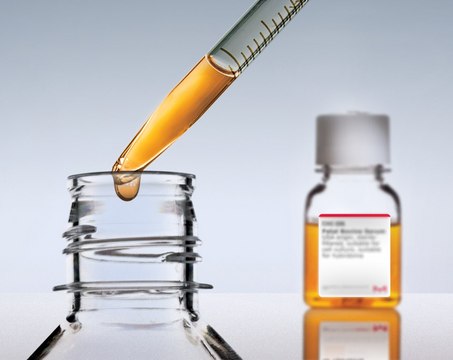General description
Histone acetyltransferase KAT2A (UniProt: Q92830; also known as EC 2.3.1.48, General control of amino acid synthesis protein 5-like 2, Histone acetyltransferase GCN5, HsGCN5, Lysine acetyltransferase 2A, STAF97) is encoded by the KAT2A (also known as GCN5, GCN5L2, HGCN5) gene (Gene ID: 2648) in human. Histone acetyltransferases (HATs) are transcription co-activators recruited by transcriptional activators to target gene promoters, where they enhance the transcription activity by acetylating lysine residues within the N-terminal regions of histones. KAT2A has significant histone acetyltransferase activity with core histones, but not with nucleosome core particles. It is also shown to acetylate non-histone proteins, such as CEBPB. It is also responsible for the acetylation of histone H3 at the gamma-H2A.X harboring nucleosomes at the site of DNA damage, thus establishing a cross-talk between the two histone modifications. It is expressed in all tissues and high expression is observed in ovary. Two isoforms of KAT2A have been described that are produced by alternative splicing. It has three acetyl CoA-binding sites (aa 579-581; 586-592, and 617-620) and an N-acetyltransferase domain (aa 503-656) and a bromo domain (aa 745-815). Histone acetyltransferase KAT2A plays important roles in multiple stages of T cell functions, including development, clonal expansion, and differentiation. Loss of its activity is shown to impair T cell proliferation, IL-2 production, and Th1/Th17, but not Th2 and regulatory T cell differentiation. In case of HIV-1 infection, it is recruited by the viral protein Tat and regulates Tat′s transactivating activity and may help inducing chromatin remodeling of proviral genes. (Ref.: (Ref.: Gao, B et al. (2017). J. Immunol. 198(10); 3927-3938).
Specificity
This rabbit polyclonal antibody detects Histone acetyltransferase KAT2A in human cells. It targets an epitope within 15 amino acids from the C-terminal half.
Immunogen
Epitope: C-terminus
KLH-conjugated linear peptide corresponding to 15 amino acids from the C-terminal half of human Histone acetyltransferase KAT2A.
Application
Anti-Histone acetyltransferase KAT2A, Cat. No. ABE1418, is a highly specific rabbit polyclonal antibody that detects KAT2A (GCN5) and has been tested for use in Immunohistochemistry (Paraffin) and Western Blotting.
Immunohistochemistry Analysis: A 1:50 dilution from a representative lot detected Histone acetyltransferase KAT2A in human pancreas, cerebral cortex, and tonsil tissue sections.
Research Category
Epigenetics & Nuclear Function
Quality
Evaluated by Western Blotting in A431 cell lysate.
Western Blotting Analysis: 0.5 µg/mL of this antibody detected Histone acetyltransferase KAT2A in 10 µg of A431 cell lysate.
Target description
~94 kDa observed; 93.93 kDa calculated. Uncharacterized bands may be observed in some lysate(s).
Physical form
Affinity Purified
Purified rabbit polyclonal antibody in buffer containing 0.1 M Tris-Glycine (pH 7.4), 150 mM NaCl with 0.05% sodium azide.
Purified rabbit polyclonal antibody in buffer containing 0.1 M Tris-Glycine (pH 7.4), 150 mM NaCl with 0.05% sodium azide.
Storage and Stability
Stable for 1 year at 2-8°C from date of receipt.
Stable for 1 year at 2-8°C from date of receipt.
Other Notes
Concentration: Please refer to lot specific datasheet.
Disclaimer
Unless otherwise stated in our catalog or other company documentation accompanying the product(s), our products are intended for research use only and are not to be used for any other purpose, which includes but is not limited to, unauthorized commercial uses, in vitro diagnostic uses, ex vivo or in vivo therapeutic uses or any type of consumption or application to humans or animals.
